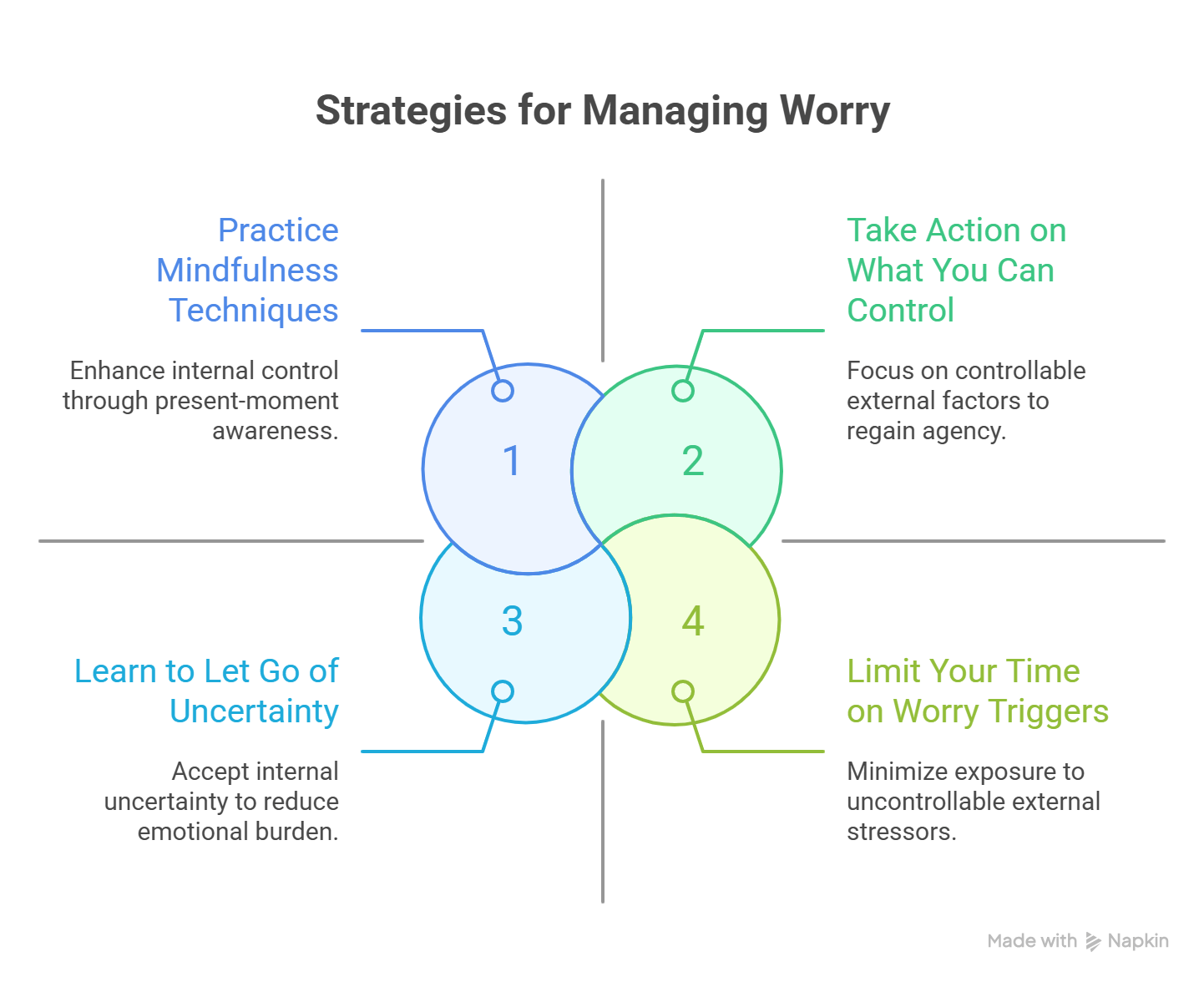
9 Empowering Ways to Break the Habit of Worrying
We’ve all been there—stuck in a cycle of worry that feels impossible to escape. The good news? Worry is a habit, and just like any other habit, you can break it. This guide is all about giving you practical, actionable tips to take back control of your mental well-being and find more calm and confidence.
Ready to get started?
1. Get to the Root of It
Take a moment to understand why you're feeling anxious. Is the issue something you can actually control, or is it coming from an irrational fear? Knowing the real reason behind your worry helps you approach it with logic instead of emotion. It’s about being an observer of your thoughts, not a slave to them.
2. Practice Being Here, Now
Worry loves to live in the past or the future. You can fight back by bringing yourself to the present. Simple mindfulness exercises like deep breathing or a quick body scan help pull your focus back to the here and now. The more you practice, the more you’ll train your brain to let go of those unhelpful thought patterns.
3. Flip the Script
When a worrying thought pops up, challenge it. Instead of letting it consume you, consciously replace it with something constructive. For example, if you catch yourself thinking, “What if I fail?”, ask a better question like, “What can I learn from this experience?” This simple act helps you build new, more positive mental pathways.
4. Limit Your Worry Triggers
Ever notice how some things just make you more stressed? It’s probably the constant stream of news or an endless social media scroll. Be intentional about what you consume. Set clear boundaries on when and how much time you spend on things that make you feel anxious. This protects your mental energy so you can use it for better things.
5. Take Action on What You Can Control
Worry often comes from feeling helpless. The antidote? Action. If you can do something about a situation, create a plan and start tackling it one step at a time. By focusing on what you can control, you regain your sense of agency and replace that helpless feeling with a sense of accomplishment.
6. Schedule Your Worry Time
This one might sound strange, but it works. Set aside a specific time each day to worry—maybe 15 minutes. When a worrying thought pops up at any other time, tell yourself, “I’ll deal with that during my worry time.” This keeps worry from bleeding into every part of your day and helps it lose its power over time.
7. Lean on Your People
You don’t have to carry this alone. Talk to a trusted friend, family member, or a professional. Simply verbalizing your worries can make them feel so much smaller and more manageable. A good support system can offer perspective and much-needed emotional relief.
8. Cultivate Gratitude
It’s hard to feel grateful and worried at the same time. Start a gratitude journal and write down things you appreciate. This practice shifts your brain's focus from what could go wrong to what’s already going right in your life. It builds a kind of mental resilience that acts as a shield against worry.
9. Embrace the Unknown
This is the hardest part, but it’s also the most freeing. Accept that some things are just uncertain, and you don’t have to have all the answers. Remind yourself that you have the strength to handle challenges as they come up. Letting go of the need for complete control is a powerful step toward peace.
Fast Action Steps
Worry Journal: Spend just five minutes writing down your biggest worries. Next to each, write whether you can control it or not. This simple exercise helps you separate what’s real from what’s not.
Box Breathing: When you feel a wave of anxiety, try this: Inhale for four, hold for four, exhale for four, and hold again for four. Repeat three times to calm your nervous system instantly.
Set a 10-Minute Timer: Set a timer and allow yourself to worry for exactly 10 minutes. When the timer goes off, get up and immediately shift your focus to something else. This trains your brain to contain worry instead of letting it take over.
